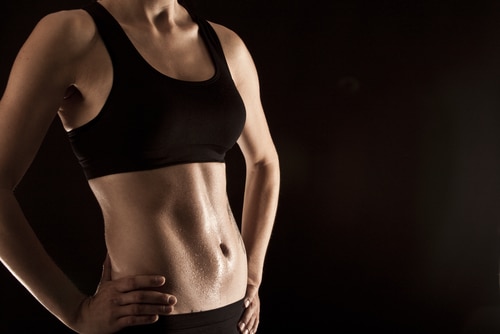
Have a Pre-Workout Cup of Coffee
A number of studies show caffeine improves exercise performance, especially for moderate-intensity endurance exercise. One of the ways it seems to do this is by reducing perceived exertion, how hard exercise feels while you’re doing it. When you have caffeine in your system, you may be less aware of how hard you’re breathing, how much you’re sweating and, in general, better tolerate the discomfort of a challenging workout.
How much caffeine do you need to get the benefits? Even though some of the studies used caffeine supplements equivalent to the amount of caffeine in three or four cups of coffee, you can get some benefit from drinking as little as two cups before a workout. Keep in mind that some people are more sensitive to caffeine than others. If it makes you feel nervous and jittery, it may not be a good pre-workout beverage for you.
Crank Up the Tunes!
Exercising in silence? Time to add some rhythm to your workout! A number of studies show listening to music during a workout reduces the perception of how hard you’re working out. Music acts as a “passive distractor,” so you’re less likely to focus on how hard you’re working. Choose your music carefully. One study showed heart rate and time to fatigue increased significantly when participants listened to “exciting” music while soft music decreased heart rate but didn’t reduce the perception of how hard exercise felt. Use fast-paced, upbeat music to pace your workout and it won’t feel quite so challenging.
Have Some Beetroot Juice
Swap your sports drink for beetroot juice and reap the benefits. Beetroot juice is rich in compounds called nitrates that are converted in your body to nitric oxide. Nitric oxide helps to open up blood vessels to deliver more oxygen-rich blood to working muscles. In addition, research shows beetroot juice reduces the amount of oxygen that needs to be delivered to muscles to maintain a certain intensity of exercise. That can translate into improved performance at the same level of effort. It also has an added benefit – it helps to lower systolic blood pressure.
Beetroot juice seems to be best for improving performance during short periods of high-intensity exercise rather than longer, lower intensity workouts. Don’t like the taste of beet root juice? Some veggies like spinach are a good source of nitrates. Eat up!
Stay Cool!
According to a study published in the European Journal of Applied Physiology, how hard a workout feels is related to rise in core body temperature. This is supported by another study showing rate of perceived exertion decreased when participants wore a cooling vest. Still another study showed that cooling the neck area when exercising in the heat increased time to exhaustion. Fortunately, you don’t have to invest in a cooling vest to get the benefits. Research shows something as simple as drinking an icy drink before working out in the heat or immersing your hands in cold water makes exercise feel easier.
Why is staying cool so effective? The more you reduce your core body temperature, the less blood you have to divert to your skin to release heat. That means more oxygen-rich blood is available to fuel your muscles during exercise. That’s a good thing! Skip the tight, constrictive clothing and dress lightly when you’re exercising in a warm environment. Keep plenty of ice cold fluids on hand to stay hydrated and make exercise feel more comfortable.
The Bottom Line?
Exercise can only feel so easy if you’re working out hard enough, but these four things could make it feel a little more comfortable and help you perform a little better. Give them a try!
References:
Scand J Med Sci Sports. 2005 Apr;15(2):69-78.
Appetite. 2011 Aug;57(1):247-52. doi: 10.1016/j.appet.2011.05.304.
American College of Sports Medicine. “Caffeine and Exercise”
Percept Mot Skills. 2000 Dec;91(3 Pt 1):848-54.
Iranian Journal of Health and Physical Activity (2012) 3 (1), 15-20.
Free Radical Biology & Medicine 48 (2010) 342-347.
The New York Times. “Looking for Fitness in a Glass of Juice”
Eur J Appl Physiol. 2004 May;91(5-6):563-71.
J Occup Environ Hyg. 2011 Aug;8(8):484-91.
J Athl Train. 2011 Jan-Feb;46(1):61-8.
Related Articles By Cathe:
5 Reasons Why It’s Important to Warm Up Before Exercise
Does It Matter What Time of Day You Exercise?

